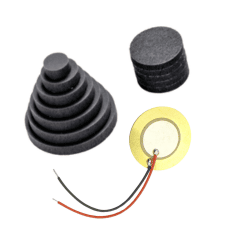
In the ever-evolving world of music technology, drum triggers have emerged as a transformative tool for drummers and percussionists.
If you’re a seasoned drummer, an electronic music producer, or simply curious about the latest musical advancements, this article will unveil the mystery behind drum triggers, explaining what they are,
how they work, and why they’re reshaping the way we create and experience drumming.
A drum trigger is a small electronic device designed to capture the physical impact or vibration of a drum or cymbal and convert it into an electrical signal.
This signal is then used to trigger or activate a variety of electronic sounds or samples.
In essence, a drum trigger enables drummers to blend the world of acoustic and electronic percussion, expanding their creative horizons and the soundscape of their performances.
The magic of a drum trigger lies in its ability to sense and respond to the drummer’s strikes on the drum kit. Here’s a simplified breakdown of how it works:
A drum trigger is attached to a specific part of a drum kit, such as the drumhead, drum rim, or cymbal. It is secured in place using adhesive or clamps, ensuring it stays in position during vigorous drumming sessions.
The trigger is equipped with sensors that are highly sensitive to vibrations and impacts. When the drummer strikes the drum or cymbal with a drumstick or mallet, these sensors detect the resulting vibrations.
Upon detecting a hit, the drum trigger generates an electrical signal. This signal varies in strength and duration based on the intensity and duration of the impact.
The electrical signal is sent to an electronic drum module or sound module.
This module processes the signal and produces a corresponding sound, which can be customized to emulate various drum or percussion instruments.
The result is a seamless blend of acoustic and electronic sounds.
Drum triggers offer a multitude of benefits to drummers and musicians alike:
Drummers can access an extensive array of sounds, ranging from traditional drum tones to exotic percussion instruments and electronic effects. This versatility is invaluable for artists exploring diverse musical genres and styles.
Drum triggers provide consistent and precise triggering, reducing variations in sound that can occur when playing purely acoustic drums. This ensures a reliable and polished performance.
By using drum triggers with electronic drum kits, drummers can practice silently with headphones, making them an excellent choice for situations where noise control is essential.
In recording studios, drum triggers allow sound engineers to capture the drum hits independently of the acoustic drum sounds. This flexibility provides greater control over the mix and enhances the overall sound production.
Drum triggers are frequently employed in live performances, enabling drummers to seamlessly incorporate electronic elements into their sets. This dynamic fusion of acoustic and electronic percussion enhances the overall live experience.
Drum triggers represent a groundbreaking innovation in the world of percussion.
They empower drummers and musicians to push the boundaries of their creativity, bridging the gap between acoustic and electronic percussion.
Whether you’re looking to diversify your drumming palette, refine your sound in the studio, or elevate your live performances, drum triggers are a powerful tool to unlock new sonic possibilities in your musical journey.
Embrace the beat of the future with drum triggers, where innovation meets rhythm.
Welcome to our triggers category
Copyright © 2024 World drummers – All Rights Reserved